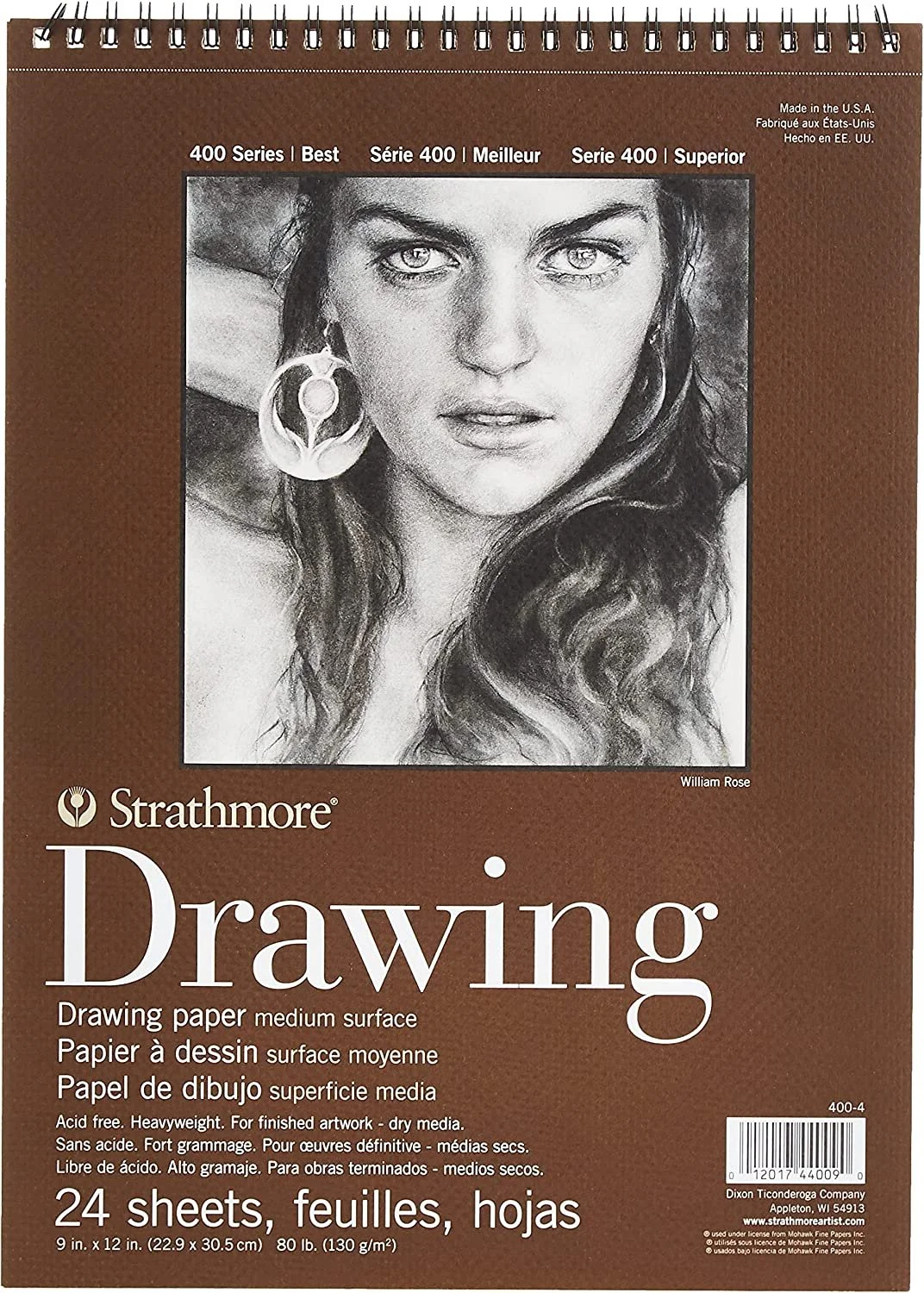Let’s talk about Drawing Paper
What is The Right paper for Your Project?
Chemistry is very important in Art. Often artist don’t take in consideration the alchemy that takes place when mixing paint with spirits and then onto a surface. The environmental factors also, such as temperature and light.
The type of paper you’ll use is detriment for the longevity, the brightness of the colors, the darkness of the shadows, the shine against the light, etc. In short, not all paper works the same for drawing.
For the type of drawing we mostly practice in the Academy, dry media that has some texture to it will ensure that your pencils or pastels will stick to the page instead of sliding off, but not too much texture that we see white pores where the pencil cannot reach without extra pressure.
When selecting paper, remember that it is weighted in pounds. The higher the number pound, the thicker the paper will be. For media like watercolor, you’ll want to ensure you’re working on a thicker paper (such as 140 pounds)—this will ensure that the paper won’t curl or wrinkle from the water. The same when we use markers, our best options at store like Michaels or Barnes and Noble would be a mixed media block.
For general practice and portrait artwork, you’ll want to buy medium-weight papers around 80 pounds with light texture. Any paper under 80 pounds is considered thin and won’t be able to withstand many layers of material. The most popular colors are an ivory (off-white) or bright white, but if you’d like a fun challenge, try drawing on black paper.
Sketching
Thin paper such as 20-pound copy paper is fine for sketching but nothing more. It will not hold great amounts of shading and blending, so using this paper for a complex project might result in the paper ripping or it fading away in time. For drawings that require a lot of shading, blending, and excessive erasing, you’ll want to opt for something that’s heavier.
Prismacolors
Like graphite, colored pencils can be applied to many types of papers. They look best on pages with a slight texture; selecting something that’s overly smooth will make them hard to get a consistent color.
Charcoal and Dry Pastels
Charcoal and dry pastels are dry and dusty, making them hard to control. Unless you’re using a charcoal pencil, you don’t sharpen these materials like you would a pencil or colored pencil. Drawing onto a toothy surface will help to extract some of the charcoal or dry pastel onto the paper.
Make sure you select a paper that’s above 100 pounds—especially since charcoal and dry pastels often require a lot of erasing.
Oil Pastels
Oil pastels can go on rough surfaces like dry pastels. But because they have oil in them, they work well on smooth paper. They also never fully “dry,” so you can layer and blend colors on the page. For this reason, thick paper—even up to 300 pounds—is ideal.
The Perfect Paper for Hand Lettering/Calligraphy
HAND LETTERING AND CALLIGRAPHY
For any type of hand lettering or calligraphy, smooth paper is a must. Using any sort of textured paper can break a nib or break the flow of your letterforms. Try practicing your typography using a translucent bond paper to start. When you’re ready to create finished works, thick bristol sheets will provide the smooth surface you need. Other smooth-surface papers are an option (like hot press watercolor) just as long as they don’t have a waxy finish.
I will be selling Art Supplies at the Academy for everyone’s convenience. You might buy my preferred drawing pad and any of the other materials in our shop. This month I asked most of you to purchase a drawing pad to keep all of your practice work in one place. You can buy any pad at the store over 80 pounds that you prefer for drawing, as long as it is the size of or longer than 9x12 inches.
